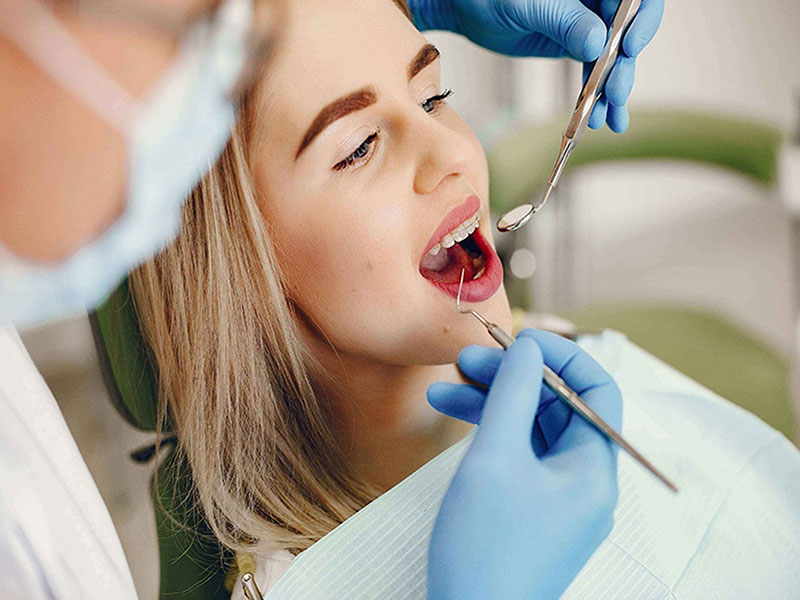Dental Anesthesia for Children and Its Benefits in Dentistry
Dental anesthesia in children is an effective method for reducing stress and anxiety during dental treatments. This type of anesthesia allows dentists to perform necessary treatments more easily and accurately, without causing pain or discomfort to the child. In many cases, children avoid visiting dental clinics due to fear of dental procedures. Anesthesia can serve as an effective solution to this problem, providing a positive experience for them during dental treatment. The benefits of dental anesthesia for children extend beyond just pain and discomfort relief. This method can also help improve the child’s focus during treatment, allowing the dentist to work with greater precision. For instance, in cases requiring more complex procedures like fillings or tooth extractions, anesthesia can reduce treatment time and minimize the likelihood of side effects. This is especially important for children with behavioral issues or severe anxiety.Moreover, dental anesthesia can provide greater reassurance for parents. Parents are often concerned about their children’s pain and discomfort during treatment. With anesthesia, they can be confident that their child will feel comfortable during the procedure, making the dental experience a positive one for everyone involved. Overall, dental anesthesia can be an effective tool in improving the oral health of children.How Dental Anesthesia Improves the Treatment Experience for Children
Dental anesthesia can significantly improve the treatment experience for children. One of the biggest challenges in pediatric dental treatment is the child’s fear and anxiety. Anesthesia can help reduce these negative feelings, allowing the child to feel more at ease during the procedure. This sense of calm not only helps the child have a positive dental experience but also allows the dentist to focus more on their work and perform the treatment with better quality. In addition to reducing fear and anxiety, dental anesthesia can enhance the child’s cooperation during treatment. Children often have difficulty understanding the treatment process and may resist cooperation due to the fear of pain. With anesthesia, the child can remain completely relaxed, enabling the dentist to proceed with the treatment easily and without issues. For example, in cases where primary teeth need to be extracted, anesthesia can help reduce pain and discomfort, making the process quicker and more effective.Furthermore, dental anesthesia can provide parents with greater peace of mind, knowing their child is comfortable and pain-free during the treatment. This assurance can help parents feel more at ease when taking their children to the dentist, ultimately contributing to the improvement of their children’s oral health. Overall, dental anesthesia not only improves the treatment experience for children but also leads to higher satisfaction for parents.Providing all specialized dental services, including implants, orthodontics, cosmetic dentistry, surgery, and specialized treatments for children at Dr. Damghanipour’s specialized dental clinic.

Preparation and Essential Tips for Pediatric Dental Anesthesia at Dr. Babak Damghani Pour’s Clinic
Preparation for pediatric dental anesthesia is of utmost importance. Parents should gather all necessary information before visiting the dentist and discuss the child’s health status, including any allergies or previous medical conditions, with Dr. Babak Damghani Pour. This information helps the dentist choose the best type of anesthesia and ensure the child’s safety during the procedure. Additionally, parents should make sure that the child fasts on the day of the treatment to avoid any potential side effects. Another important factor is the psychological preparation of the child for the treatment. Explaining the anesthesia process and treatment in simple, non-threatening language can help reduce the child’s anxiety. Parents can use positive stories or examples from others’ experiences to help the child feel more comfortable. Additionally, creating a calm and supportive environment before the dental visit can help the child feel more secure.Finally, after the procedure, parents must take post-treatment care seriously. This includes monitoring for any signs of side effects and ensuring the child gets proper rest and recovery. Dr. Babak Damghani Pour typically provides aftercare instructions that parents should follow carefully. By adhering to these tips, the child’s treatment experience can be improved, and their overall health and safety can be ensured.Conclusion
What is dental anesthesia for children and why is it performed?
Dental anesthesia for children is used to create comfort and reduce anxiety during dental treatments. This method is typically employed for children who are afraid or unable to cooperate.
Is dental anesthesia safe?
Dental anesthesia, when administered by experienced dentists and using appropriate medications, is completely safe. Doctors typically assess the child’s health status before any anesthesia to ensure there are no underlying issues.
What are the potential side effects of anesthesia for children?
Common side effects include nausea, drowsiness, and headaches. However, these side effects are usually mild and temporary, resolving over time. In rare cases, some children may experience more severe reactions that require additional care.
What is the recovery time after anesthesia for children?
The recovery time for children depends on the type of anesthesia and the medications used. Most children can return to their normal state after a few hours, but it is advisable for parents to monitor them to avoid any complications.
What precautions should be taken before and after anesthesia for children?
Before anesthesia, parents should consult with the doctor and avoid giving any food to the child. After the procedure, it is best for the child to rest in a calm environment and avoid heavy activities to ensure a faster recovery.
